
| EasySpec (ES) was created in to make analysis as astronomy spectra fun and easy, hence the name. There are several programs already available, but as a beginner, I found them to be either too sophisticated or simple but with a less than satisfying user interface. My goal was to automate basic functions and really streamline the process of going from a raw spectra to a possible identification. I also wanted to make it easy to document, save and share your findings. I think ES does all this nicely. | 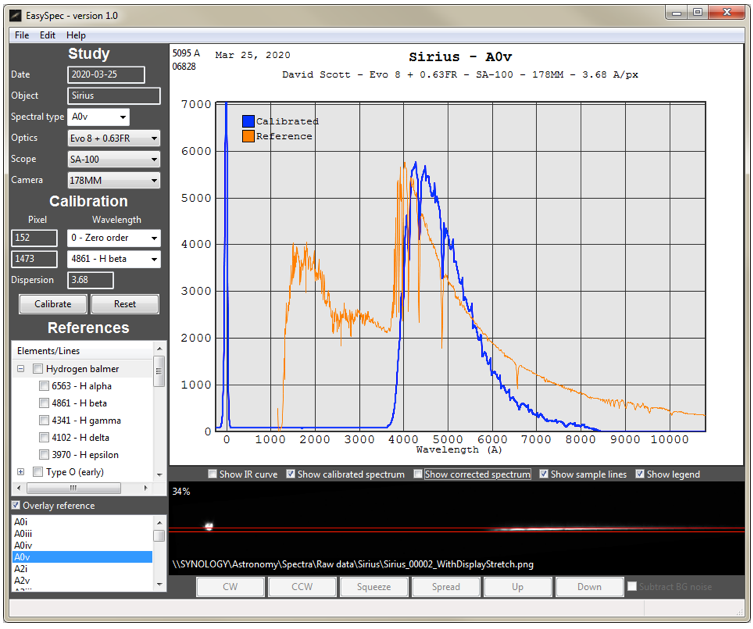 |
|
Downloads:
- Version 1.10 now available - March 21, 2025
- The User's Manual
Change summary:
Note: If updating from a previous version, just delete the old installation folder and install this newer version. However, this will overwrite your settings for your equipment and color preferences. Please contact me and I will instruct you how to avoid this.
- Version 1.10 - March 21, 2025
- Can now choose the wavelength start and end values for display of calibrated data.
- This new version may require the installation of the latest Microsoft C runtime libraries in order to run app. This can be downloaded and installed from here HERE
- Added the ability to plot doppler shifts on a calibrated spectrum.
- Fixed background noise subtraction and made the amount of subtraction configurable.
- Version 1.9 - January 6, 2024
- Bug fix - Could not set the starting wavelength when creating an IR curve.
- When doing a non-linear calibration, the clicked pixel value will go to the selected cell first (if one is selected).
- Don't display erroneous 0.0 A/pix dispersion when doing a non-linear calibration.
- Included more reference wavelengths in the choose list when doing a non-linear calibration.
- Truncate reference spectrum to between 3500 and 9000 Angstroms. This is configurable in the .ini file.
- The Reset button on the Non-linear calibration tool can optionally clear the residual calculations table or leave all values to be edited.
- A colorized 1D spectrum band is now drawn below the graph.
- Version 1.8 - November 11, 2023
- Added support for loading SER video files.
- Added support for 16-bit monochrome FITS files
- When the image window has the mouse focus, the left and right arrow keys can be used to go to the previous and next frames in a SER file and the up and down arrow keys can be used to move the sample window up or down by a single pixel.
- Version 1.7 - March 23, 2023
- Changes to the Smoothing preference are automatically reflected in the display graph.
- The App would crash if a user-defined wavelength label was too long or if it contained a double quote character.
- Version 1.6 - December 19, 2021
- Any wavelength value can be entered now when doing a non-linear calibration. Before, the user had to pick from a list of predefined wavelengths.
- The spectral types list was not sorted properly
- Version 1.5 - July 3, 2021
- Added the ability to annotate user-defined reference wavelengths
- Version 1.4 - May 31, 2021
- Added the Stellar Properties Calculator
- Bug fix - The tool tip for Dispersion was attached to the first pixel entry field.
- Added the ability to do non-linear calibration
- Updated wavelengths.xml to include NaI line for Class M stars and Swann bands for Carbon stars.
- Version 1.3 - November 22, 2020
- Updated wavelengths.xml to include Fe II class novas, S-class stars and SN Type 1a.
- Reference lines can now be identified with vertical lines or arrow symbols.
- Added the Notes field.
- Can now load an external .dat file as a reference curve.
- Subtract background noise was not subtracting the correct value.
- Bug fix - calibration failed if the first calibration point was not the zero order peak.
- Version 1.2 - September 9, 2020
- Bug fix - The flatten curve function did not work very well.
- Added many new reference lines for WR, tellluric absorptions, carbon stars, etc.
- Reference "bands" can now be displayed actually as a band instead of just a single line.
- Version 1.1 - August 2, 2020
- Bug fix - The colors would sometimes make the graph lines partially transparent.
- Bug fix - Reference spectrum F2iv was incorrectly labeled as F02iv.
- Bug fix - The spectral type edit control was ignored so the user couldn't manually enter a spectral class.
- Version 1.0 - The first official release.
There is no installation required. Simply unzip the installation package file and drag and drop the EasySpec folder to a convenient place (such as your Desktop). Then just run the EasySpec.exe program file. You may wish to create a shortcut to this file in your Task Bar for easy access.
As with all Windows programs, this program requires various helper .dll files. The necessary ones should be included either with Windows or in the EasySpec folder. However, if you receive a message when trying to start the application about a dll file that is missing, please let me know and I will fix the omission.
Current issues:
If you have any questions or problems, feel free to contact me. However, I do ask that you read the User's Manual. I put alot of effort into it and I think it explains the basic functionality quite well.
- Via Cloudy Nights: member descott12
- Email: descott12@gmail.com
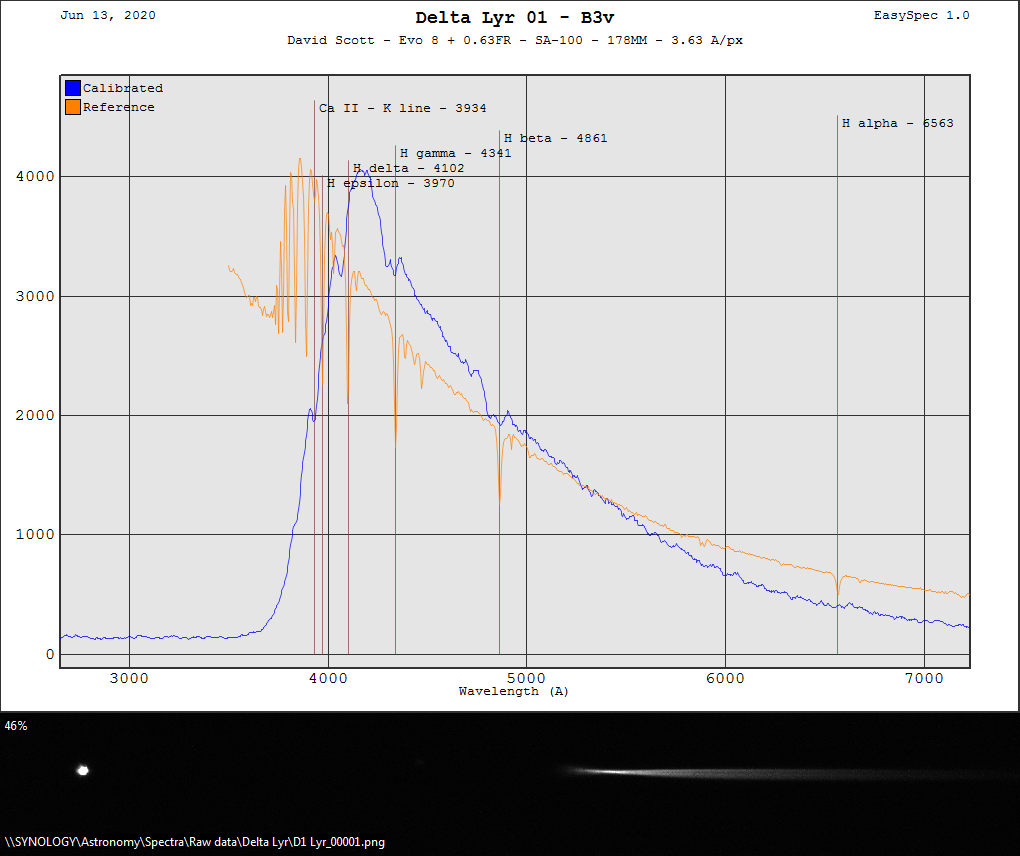


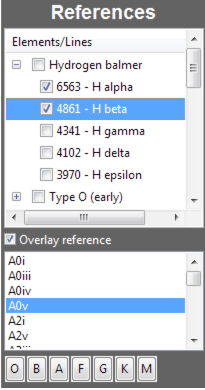
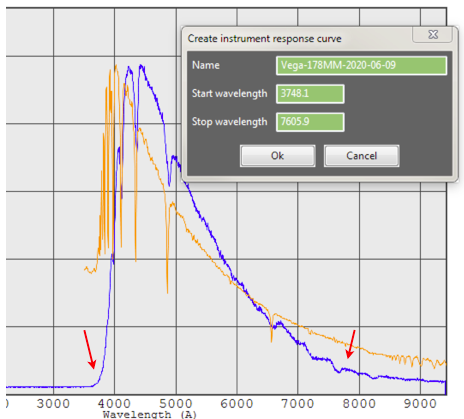
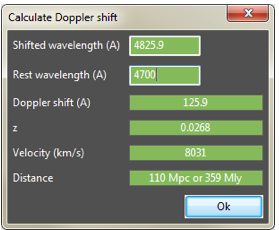
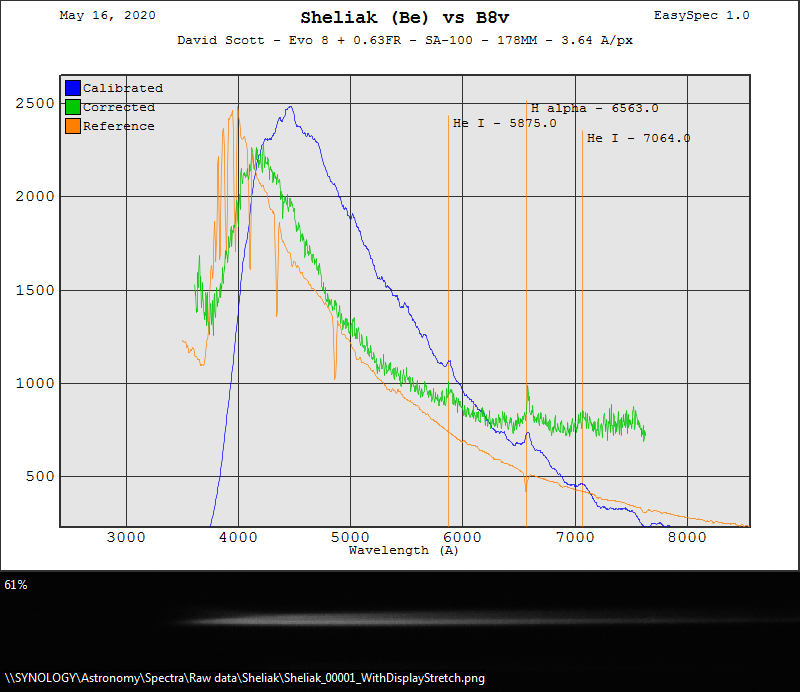
| © 2020 David Scott |